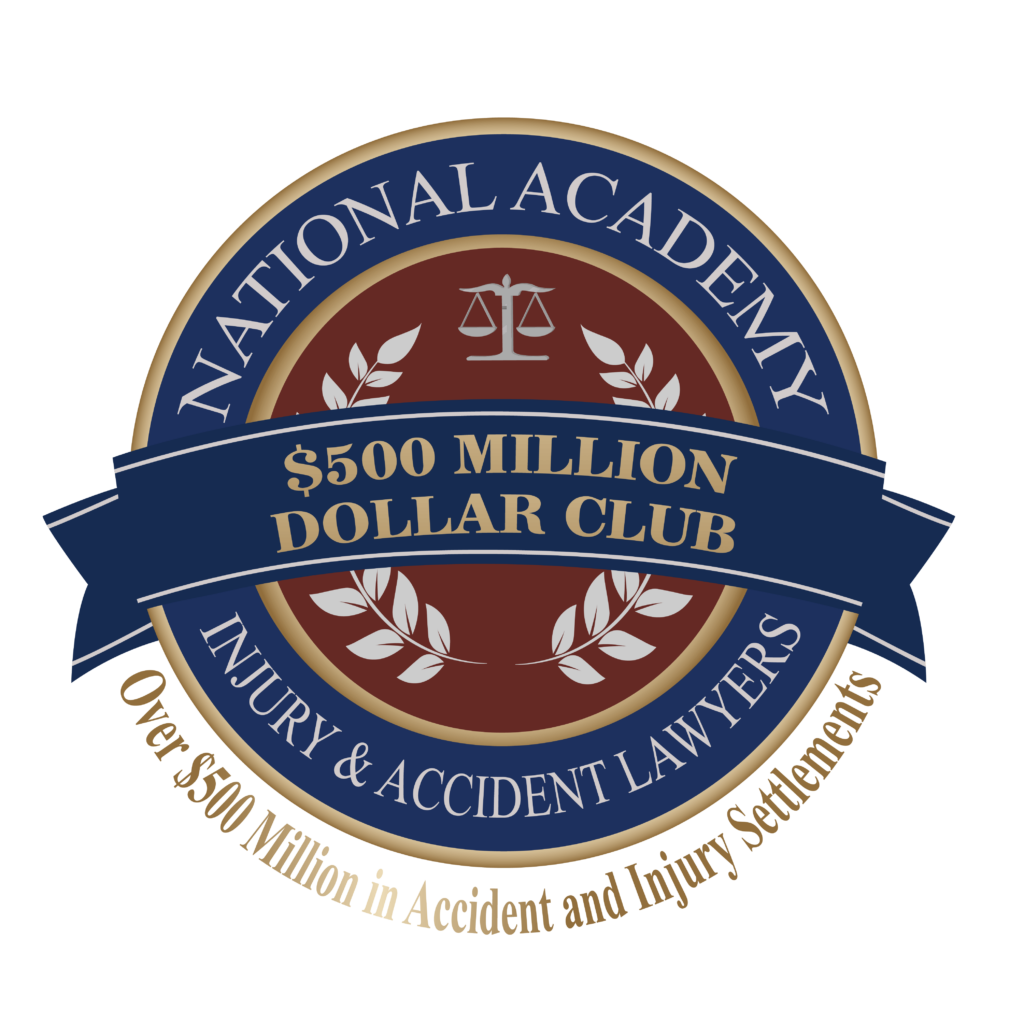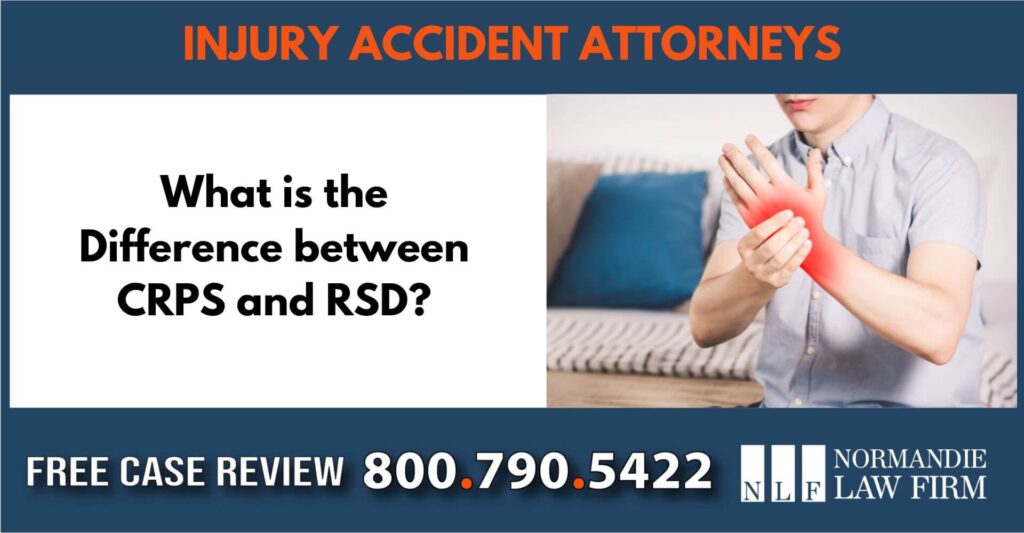Complex Regional Pain Syndrome and Reflex Sympathetic Dystrophy and two conditions that are common among accident victims, whether they were injured in a car crash or fell down a slippery floor. Both conditions produce severe pain and discomfort for the patient, typically in the hands, arms, legs, or feet). As a result, many people wonder, “Is CRPS the same as RDS?’
It’s important to note that these are two distinct and separate health conditions, and a proper diagnosis is essential to the recovery process. You should also obtain legal advice if another party, such as a negligent driver or business owner is responsible for the accident that caused your injury. We can help you take immediate action on a compensation claim, so contact our law firm to receive a free case review.
Is There a Difference between CPRS and RSD?
Yes, there are critical differences between these conditions, though many people use the terms interchangeably. This is due to the fact that both conditions share similar symptoms, and many people are diagnosed with either Reflex Sympathetic Dystrophy or Complex Regional Pain Syndrome following a serious accident.
It’s also worth noting that RDS is an older term that was used to describe a form of CRPS. This condition is now known as Complex Regional Pain Syndrome Type I, which is caused by injury that does not result in nerve damage. Thus, it’s easy to see why people often confuse one condition for the other.

Our Recent Verdicts and Settlements
$2.5 Million
$1.1 Million
$1.5 Million
$600,000
$525,000
$734,851
Symptoms of RDS and CRPS
Since it’s so easy to mistake CRPS for RSD and vice-versa, let’s take a look at the symptoms that you can experience with either condition.
- Intense, burning pain
- Increased skin sensitivity
- Skin temperature changes, i.e., skin feels cooler or warmer than it did before
- Blotchy, pale, red, or purple coloration in the skin
- Skin is excessively sweaty or has a different texture (thin and shiny, for example)
- Changes in your hair and nail growth
- Stiffness and/or swelling in the affected joint
- Decreased range of motion in the affected limb / body part
You are unlikely to have all the symptoms listed above, but the key indicator for CRPS of RDS is a chronic, intense pain that is much worse that it should be based on the severity of injury. Furthermore, the pain gets worse, and not better, over time, even after the initial injury has fully healed. Another factor is that the pain is normally in the extremities, meaning your arms, legs, hands, and feet.
What is the Difference between Type I and Type II CRPS?
In essence, whether you have nerve damage or not is the main deciding factor when it comes to a diagnosis of CRPS Type 1 or CRPS Type 2.
With Complex Regional Pain Syndrome Type 1, you will not have any damage to the nerves in the affected area. This, by the way, is the most common form of CRPS, and it’s believed that around 90% of patients with CRPS fall into this category.
On the other hand, CRPS Type 2 happens when there is an injury to the peripheral nerves. The symptoms are similar to what you would have with Type 1 CPRS, but nerve damage is the defining feature that distinguishes one condition from the other.
In spite of this critical difference, the treatments are generally the same for both types of CRPS. They are also diagnosed using similar methods, which include imagine studies, lab tests, and nerve conduction studies.
Treatment Options for CRPS and RSD
Seeking treatment as early as possible will help you manage your symptoms and decrease the intensity of pain and other issues that are difficult to live with. Possible treatments include:
- OTC pain relievers or prescription pain killers
- Anticonvulsants or antidepressants
- Prednisone and other corticosteroids
- Intravenous ketamine
- Medication for bone loss
- Blood pressure meds, such as Dibenzyline and Minipress
- Topical creams or patches
- Heat therapy
- Occupational / physical therapy
- TENS (Transcutaneous electrical nerve stimulation)
- Mirror therapy
- Intrathecal drug pumps
- Spinal cord stimulation
- Acupuncture
Please note that treatment is an on-going process, and many patients experience a reoccurrence of symptoms when there is a triggering event, like intense stress or exposure to cold temperatures. Keeping track of your symptoms and reporting them to your healthcare provider right away can help you live with the debilitating impact of Complex Regional Pain Syndrome or Reflex Sympathetic Dystrophy.
Time Limit to File an Accident Injury Claim
You generally have 2 years staring from the date of injury to file a personal injury lawsuit in California, no matter what type of injury you sustained. With that in mind, it’s crucial to have your accident investigated by an experienced law firm and ensure that you have the necessary evidence to build a strong case.
Please note that in some cases, how long you have for an injury claim is based on when you are diagnosed with a specific health condition, like Type I or Type II Complex Regional Pain Syndrome. Or, it may be a public entity, such as a public school district, police department, or county agency that’s liable for the harm you suffered. Accident claims against government / public entities have a deadline of 6 months, which is a considerably shorter amount of time to seek monetary damages compared to the average lawsuit. For more information on the statute of limitations for injury cases involving CPRS and RSD, please feel free to give us a call.
Contact Normandie Law Firm
Here at Normandie, we have a team of legal experts with many years of experience in accidents resulting in nerve injuries and chronic pain. We have a proven track record of recovery on behalf of victims and their loved ones, and we are more than ready to fight for the compensation you deserve.
The Zero Fee Guarantee is our promise that you will never pay out of pocket when you retain our services. Legal fees are included in the settlement that’s paid by the defendant, so we have to win your case in order to get paid. In the event you don’t receive compensation from an accident claim or lawsuit, we guarantee that you pay nothing for the cost of legal services.
Please contact us today and take advantage of a free consultation with one of our attorneys.
Other Pages on Our Website Related to This Topic
Forearm Fracture Resulting in Permanent Nerve Damage or CRPS
Electrocution and Wrongful Death and Electrical Shock at Work Causing CRPS
How long does it take to Settle a CRPS Lawsuit













